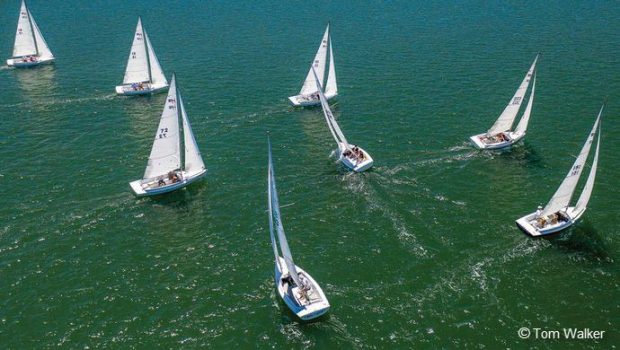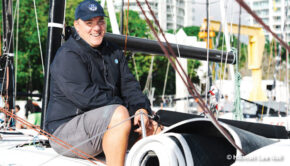How to win the top of the beat
Published on March 30th, 2021
How we end things impacts how we feel. A bad regatta feels better when the last race is a keeper, much like how we feel when we ace the end of a weather leg. In this report for Sailing World, Chris Snow details how to win the top of the beat:
It’s natural to get a pit in your stomach before the start of a big race. Even more so when the fleet is large and the line is crowded. This is partly because the boats are very close together, the closest together they will be in the race. Also, there is a perception among most of us that the start is the most important part of the race. Get a good start, and a good result will surely follow. While there’s truth in that, there is a second part of the race that is at least as important and should come with serious butterflies, if it doesn’t already. That’s the last third of the first upwind leg.
Here, at the pointy apex of the traditional racecourse, boats funnel back together and are again quite close to each other. Opportunities to gain and lose are enormous depending on how you play the myriad situations you can find yourself facing. Let’s explore some options of what to do if you find yourself in the front, middle and back of the fleet as you make your approach to the top mark.
Before we get into the details, a quick story. A few years ago, I was sailing with my very good friend, and brother-in-law, on his new J/70 Cool Story Bro (ask a teenager for an explanation of the name) in the first North American Championship for the class. We were sailing in the fall in Annapolis, which is a notoriously tricky place to sail—lots of wind shifts and current, and 90 boats on the starting line. Going into either the last or second-to-last race, we were sitting in around seventh overall. We would be ecstatic to finish in the top 10 in our first big regatta—pretty good for a brand-new boat and brand-new team.
My brother-in-law was steering, and I was calling tactics. Because we already had a bad race to throw out, I needed to be extra conservative and avoid putting up another big number. The race started, and we had a good lane on starboard heading left. Boats that had poorer starts ducked us and headed right. In the lighter air, the tacking angles were wide. The beat was a mile and half, nice and long to spread out the fleet at the top mark. Halfway up the beat, the fleet was separated left to right by at least a mile and half. You could not read the numbers of the boats on the far right of the course. – Full report









 We’ll keep your information safe.
We’ll keep your information safe.